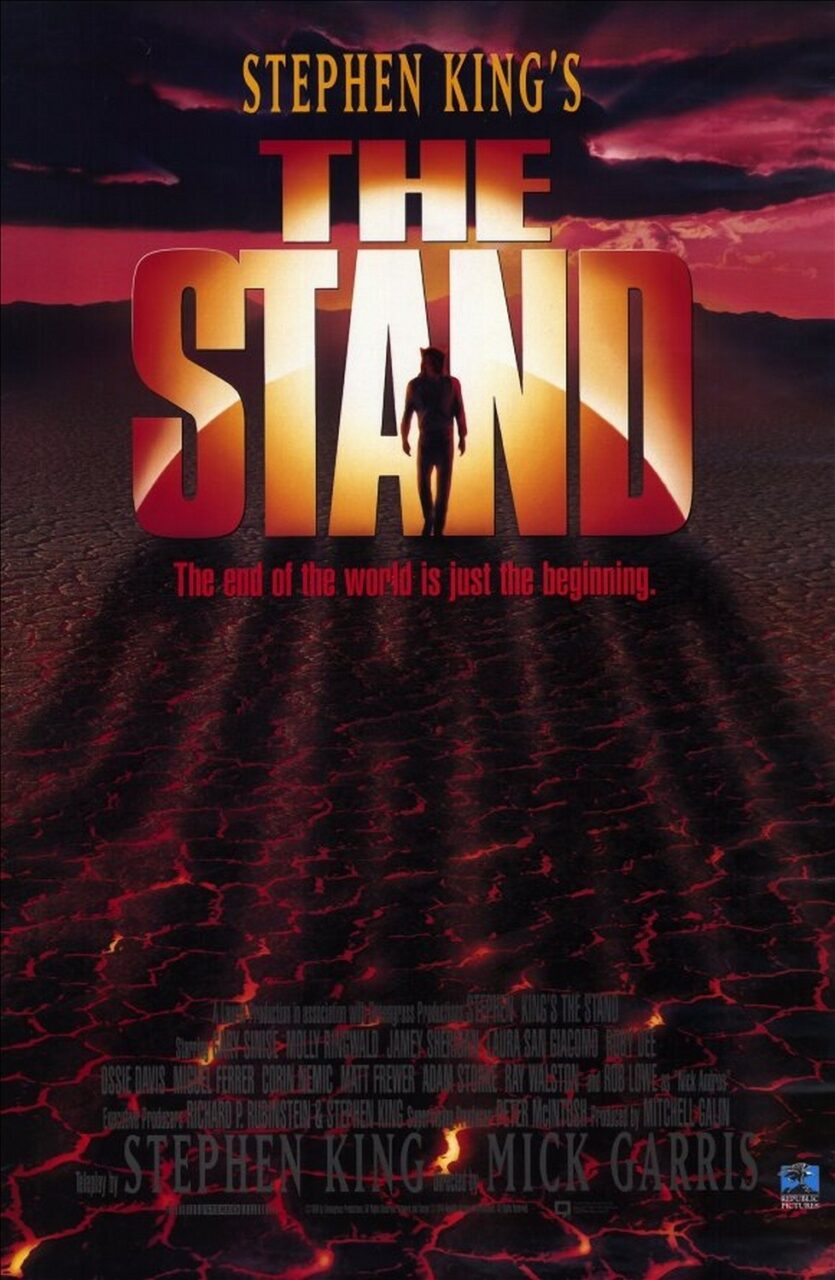USA. 1994.
Crew
Director – Mick Garris, Teleplay/Based on the Novel by Stephen King, Producer – Mitchell Galin, Photography – Edward Pei, Music – W.G. Snuffy Walden, Special Effects Supervisor – Lou Carlucci, Makeup Effects – Steve Johnson’s X.F.X., Inc., Production Design – Nelson Coates. Production Company – Laurel Productions/Greengrass Productions.
Cast
Gary Sinise (Stu Redman), Jamey Sheridan (Randall Flagg), Adam Storke (Larry Underwood), Rob Lowe (Nick Andros), Molly Ringwald (Frannie Goldsmith), Laura San Giacomo (Nadine Cross), Ruby Dee (Mother Abigail Freemont), Corin Nemec (Harold Lauder), Miguel Ferrer (Lloyd Henreid), Matt Frewer (Trashcan Man), Bill Fagerbakke (Tom Cullen), Ray Walston (Glen Bateman), Peter Van Norden (Ralph Brentner), Ossie Davis (Judge Farris), Shawnee Smith (Julie Lawry), Bridgit Ryan (Lucy Swann), Patrick Kilpatrick (Ray Booth), [uncredited] Ed Harris (General Starkey), Mary Ethel Gregory (Alice Underwood), Sherman Howard (Dr Dietz), Max Wright (Dr Herbert Denninger), William Newman (Dr Soames), Kellie Overbey (Dayna Jurgens), Troy Evans (Sheriff Baker), Ray McKinnon (Charlie Campion), Kareem Abdul Jabbar (Monster Shouter), Ken Jenkins (Pete Goldsmith), [uncredited] Kathy Bates (Rae Flowers), Sam Anderson (Whitney Horgan)
Plot
A soldier on gate duty at a California military base makes an escape as all of the personnel inside are infected by a viral outbreak. He eventually crashes at a gas station in East Texas only to die infected. The military arrive and take everybody present at the gas station into custody. The others quickly succumb and the only one unaffected is Stu Redman. The virus, nicknamed Captain Trips, rapidly spreads across the country, killing 99.9 percent of the population. Only a handful of scattered survivors remain in the aftermath. The survivors then begin to have dreams. Some have dreams drawing them to come to Mother Abigail Freemont, a 106-year old woman living on a farm in Nebraska. She is led by visions from God to set up a new home for them in Boulder. Others have dreams drawing them to join a demonic envoy known as Randall Flagg who is gathering all the crazies, rejects and criminals as he builds a base in the ruins of Las Vegas. The survivors follow the visions that take them to either place as the forces gather for an ultimate showdown between good and evil.
The Stand (1978) was the fourth ever novel written by Stephen King. As King tekks it, he had sought to write an equivalent of The Lord of the Rings (1954-5) but using the American landscape as a setting. He tells how the story fell into place after he saw a news report of a 1968 incident where biowarfare agents from army experiments were accidentally spilled and killed several thousand sheep.
The Stand is still King’s longest work to date (even longer in the unabridged version that King released in 1990, which has an extra four hundred pages). The book won the World Fantasy Award and has consistently come in on various all-time literary classic reader’s polls. King later included cameos from the demonic figure of Randall Flagg in other works like The Eyes of the Dragon (1986) and The Dark Tower series.
The Stand is a work that has defied filmmakers through in its sheer size. During the early 1980s, George Romero wanted to make a two-part film. In those days, a story that was stretched over two film parts was regarded as commercially unthinkable and Romero could not obtain the financing. King and Romero then went away to collaborate on the more palatably sized Creepshow (1982). A few years later, the book was made into this mini-series with a script from King and aired in four two-hour segments. Following the upsurge of King adaptations that came in 2017, a new version of the book was made as the tv mini-series The Stand (tv mini-series, 2020-1).
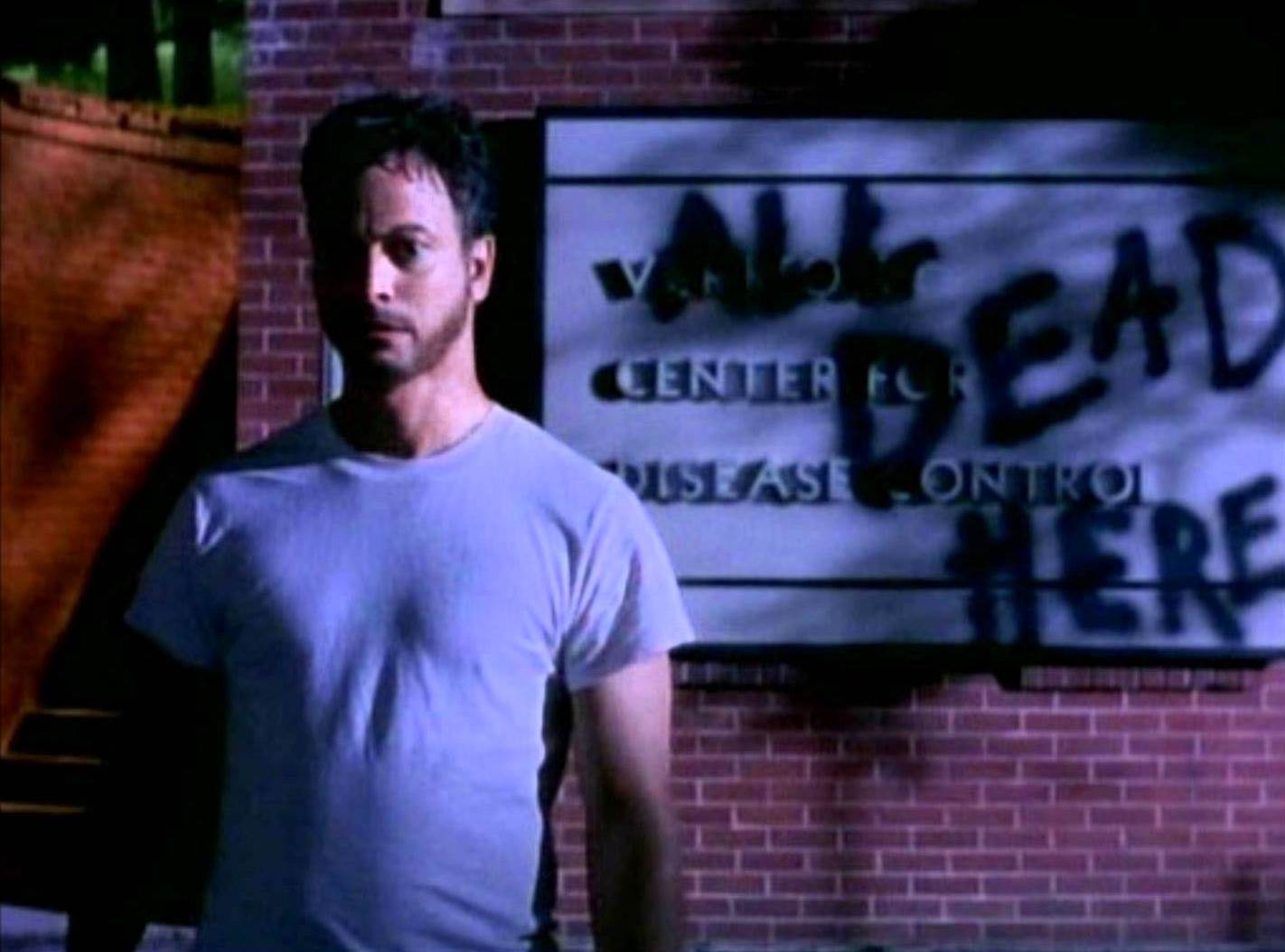
The mini-series was placed in the hands of Mick Garris, someone who has consistently ended up on this author’s personal list of the worst genre directors. Garris started out in the industry as a receptionist at The Star Wars Corporation, gained a foothold on the other side of the camera directing various Making Of documentaries for films such as The Fog (1980), The Howling (1981), The Thing (1982), Gremlins (1984) and The Goonies (1985), and then wrote/produced Coming Soon (1982), the film that began the fad of compiling B sf/horror movie trailers, before netting a position as script editor on Steven Spielberg’s anthology tv series Amazing Stories (1985-7). Garris wrote a handful of scripts with Batteries Not Included (1987), The Fly II (1989) and Hocus Pocus (1993) and then made his directorial debut with Critters 2 (1988) followed by Psycho IV: The Beginning (1990). Garris began his collaboration with King as director of the King scripted Sleepwalkers (1992), a work where Garris’s constant penchant for over-the-top and in-your-face effects caused the film to collapse into absurdity. Garris then made The Stand, which was well received back in the day, and went on to a string of other King adaptations with the tv mini-series of The Shining (1997), the anthology tv movie Quicksilver Highway (1997), the film Riding the Bullet (2004), the tv mini-series adaptation of Desperation (2006) and the tv mini-series adaptation of Bag of Bones (2011). He has also directed two episodes of the horror anthology Nightmare Cinema (2018) and produced the anthology series Masters of Horror (2005-7), Masters of Science-Fiction (2007) and Fear Itself (2008-9)..
The major problems I have with The Stand mini-series are almost all those I have with Mick Garris as a director. Grantedly, there are a couple of occasions where Garris has done not too badly – I would cite The Shining and Desperation mini-series – but there are far more examples when he has not. Garris is a ham-fisted director. He has zero understand of nuance and subtlety. All of his directorial effects are on the surface usually underlined in 72-point font caps so that everybody can understand the point.
The worst part about The Stand is Garris’s infatuation with jumpshocks – or perhaps what I will call here ‘lunge-shocks’. Garris is like a kid who gets an effect from an audience once by jumping out and going “boo” and seems to love the effect so much that he keeps repeating it ad nauseum oblivious to the fact that the laws of diminishing returns are in action or even whether such effects actually belong in a scene. The mini-series is filled with these lunge-shocks – Kareem Abdul Jabbar leering into screen to tell Adam Storke “He’s coming for you, Larry”; or dead faces turning towards Storke from the cars in the Lincoln Tunnel. Gary Sinise’s escape from the laboratory is like a bad Halloween show filled with bodies falling out of elevators into the screen, Sherman Howard reappearing after being killed to grab Sinise from behind, or dead staff reaching up out of the stairwell to yell “Come down and eat chicken with me, beautiful.” The various dreams the characters have seem to consist of nothing more than these lunge-shocks peopled by a red glowing eyed Jamey Sheridan popping up out of the cornfields.
There is the occasional moment where Garris stumbles onto something more than his lunge shocks – the image of Adam Storke strumming Eve of Destruction (1965) on a guitar at the end of a line of abandoned cars while Des Moines burns in the background. On the other hand, there is also the utterly amateurish – in Episode 1, Garris creates maybe the most ineptly staged convenience store hold-up that has ever been directed. Watching the mini-series today on a dvd copy on my home entertainment system, it is further hampered by photography that renders everything in blandly colourless sepia-predominated tones when seen on a 42 inch screen.
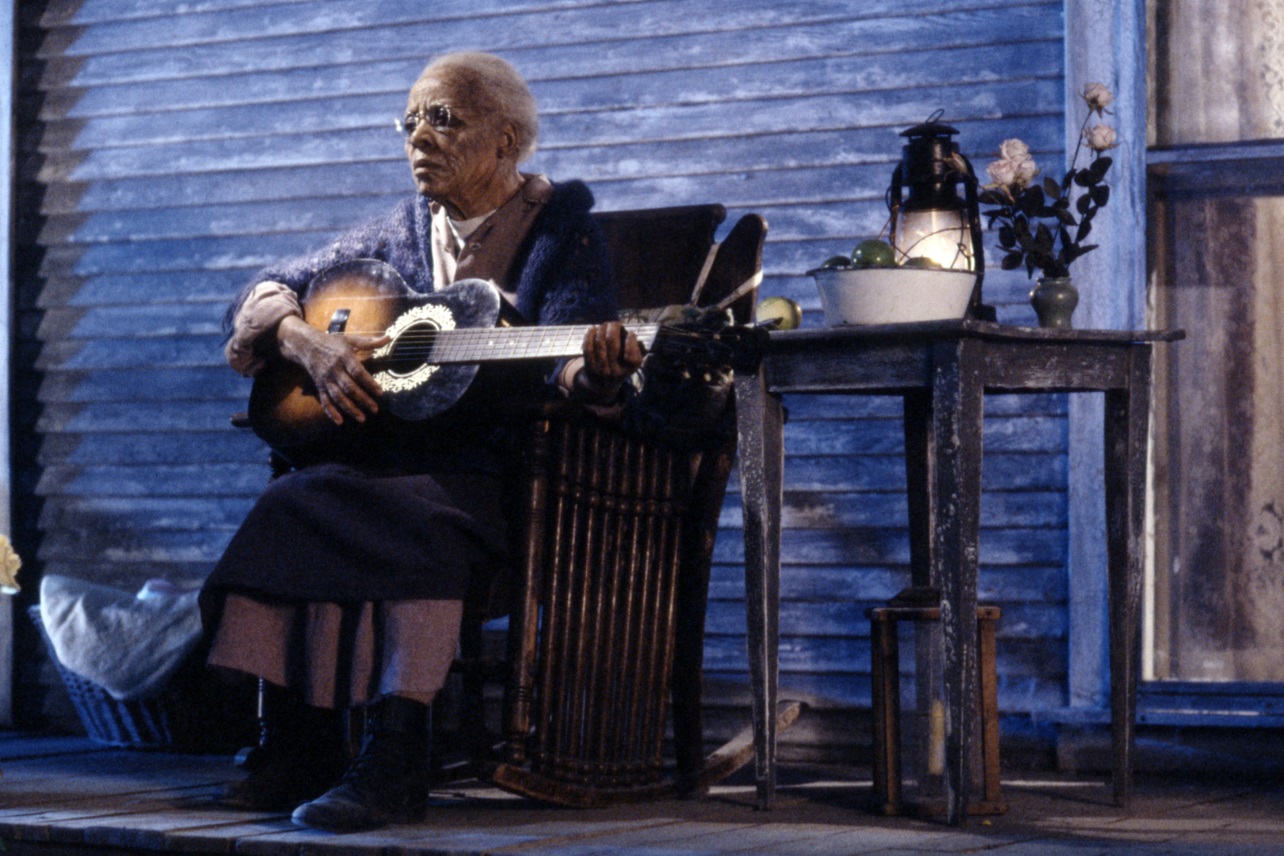
I loved Stephen King’s novel when I read and upon subsequent re-readings. It is my all-time favourite King novel. On the other hand, I hated the mini-series even though it has a script by King. Part of it I realise after thinking about it is that King has a mastery of building grand sweeping fates on the page, showing the forces of good and evil pitted against one another as he manoeuvres events into place like pieces on a chessboard. It is a story filled with eerie presentiments and an epic sense of fate and predestination coming into play.
On screen, in Mick Garris’s clod hands, all of this only translates to thuddingly heavy-handed Biblical imagery. Mother Abigail talks like an 19th Century preacher – she is seen sitting on her porch singing What a Friend We Have in Jesus (1855), she drives Flagg back with her praying refers to the survivors as ‘Children of Israel’, while offering plentiful warnings about God’s will and her own sinful pride. On the other side of the coin, Randall Flagg is less an incarnation of something mythic than he is just a mildly badass Jamey Sheridan with red eyes and some really dated demonic morphing effects, plus assorted lunge effects from Garris as he pops up every so often to snarl into people’s faces.
The mini-series also takes place in a world that seems to have some unsavoury divides – those with mental health issues, criminal pasts or are just weird and socially ill-adept are on the side of evil (and gather in Las Vegas, which is considered the sin capital of the US). In contrast, all the folk on the side of good are filled with homespun decency, dressed in plaid and look as though they have just come from church and are guided by a woman who is god-fearing, down-to-earth and full of flinty wisdom (albeit with a harshly ascetic fundamentalist spin).
It is also a mini-series where the heavy-handed Biblical imagery is unsubtly tied to imagery of the American flag. You cannot help but think in Mick Garris’s interpretation of King’s Baptist vision of the aftermath of the end of the world has somehow gotten tied up in Manifest Destiny. The American flag features in the background of many shots throughout. There is the supremely embarrassing scene where the town council is formed (in a hall where the backdrop is a pioneer mural) and the first order of business is Gary Sinise asking everyone to stand for a rendition of the American National Anthem.
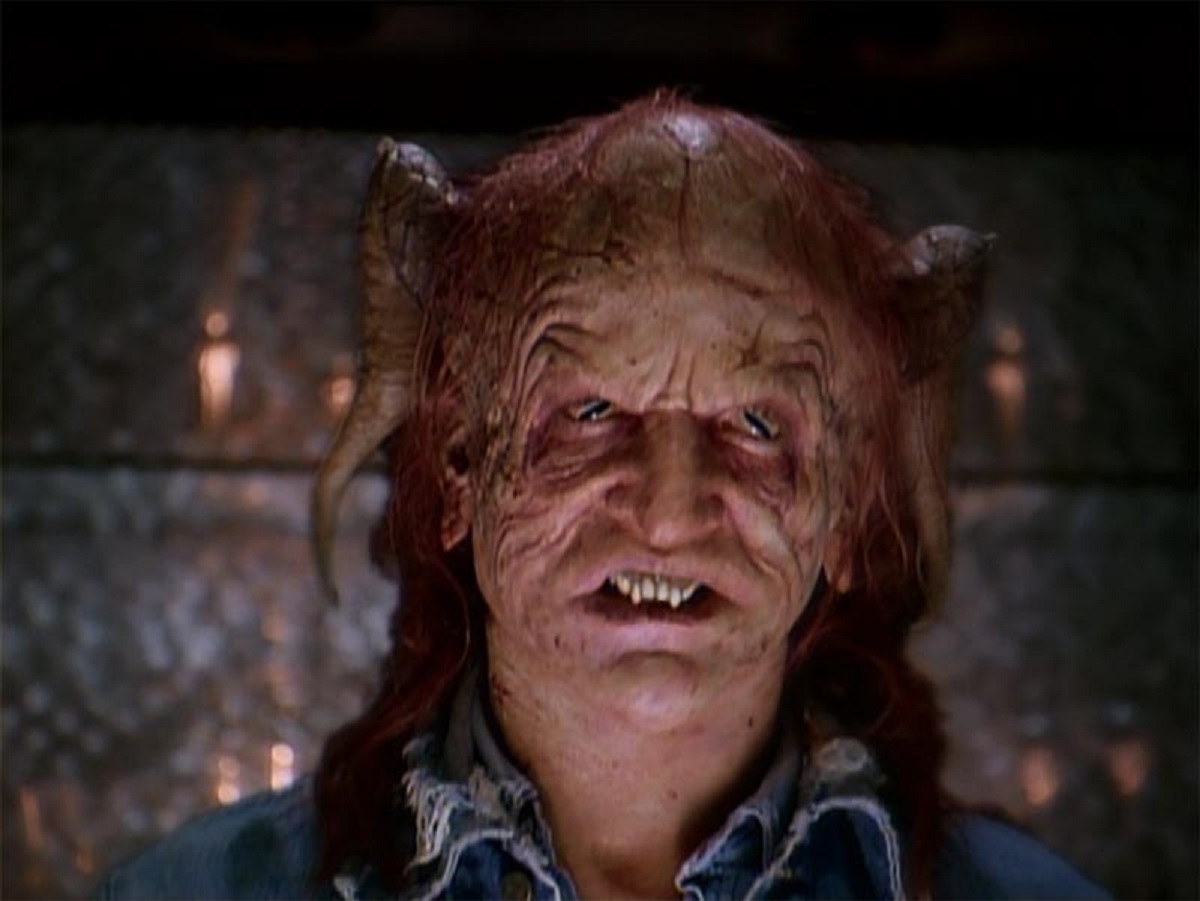
Furthermore, the story only takes place on the American continent – there is zero mention as to whether any other parts of the world were affected or whether the survivors in these regions had their own equivalents of Flagg and Mother Abigail. Indeed, the book and mini-series doesn’t even stay within the American continent – there are no survivors from South America or Canada ever shown coming to join the group, even though the end of the world would surely mean any concept of borders are now meaningless. And while there are a number of Black faces, there are also no Asian or Latino people among the survivors.
It often feels as though the casting were done in a hurry and the actors were the nearest and most affordable ones that vaguely fit the character descriptions. I don’t like condemning an adaptation for the way the characters differ from what I imagined them to be because that is simply subjective interpretation (although I will criticise them when they differ from what the author intended the character to be like). In the case of The Stand though, there is not a single character on screen that resembles the way I saw them when I read the book.
All of the other performances seem ill cast or misconstrued. Matt Frewer, usually a great performer specialising in wacky roles, is ridiculously over-the-top and one-note as Trashcan Man, a role that seems to consist of him repeating the phrase “My life for you” over and over. Corin Nemec’s Harold has no other characterisation than being a bespectacled, pimply nerd and a shifty-eyed resentful creep, meaning therefore that he is in thrall to the powers of darkness. Adam Storke’s Larry is okay but forgettable for what is really the secondary lead of the story – he has no more of a character arc than being an earnest boy and having a backstory as a singer (which is at least more backstory than Gary Sinise’s Stu gets, of whom we know precisely nothing at all other than that he comes from East Texas).
The silliest performance in the entire series comes from Shawnee Smith who plays the role of a needy, scatter-headed high school girl as a yee-hahing lunatic, turning what should have been a strong scene where she convinces Tom Cullen that the antacid is poison into something that feels like belongs more in The Beverly Hillbillies (1962-71). It is hard to take Jamey Sheridan seriously as some kind of envoy from Hell when he has been outfitted in the denims and big hair of an 80s rocker where all of his scenes come with the amiable bonhomie of said rocker greeting the boys at the neighbourhood bar rather than evil incarnate. Bill Faggerbakke – who later made a career as a voice artist, most notably as Patrick on Spongebob Squarepants (1999– ) – is a passable Tom Cullen.
The characters feel flat. This is particularly noticeable in some of the deaths – Nick Andros is killed by the bomb but the mini-series gives his departure so little emotion, it feels like he is just off-screen in the subsequent scenes. Ditto the death of Mother Abigail, which you feel should have been a moment where a community felt that all its hopes and guidance had just died. There is far more emotional effect afforded to the fate of Nadine than there is to those who perish in the nuclear explosion. Indeed, there is a singular lack of any memorable performance anywhere throughout. The characters often seem defined by one stock phrase that has been lifted from the book and repeated ad nauseum – Tom Cullen and his “landsakes” and “M-O-O-N spells ____” or Trashcan Man and his “My life for you”’s.
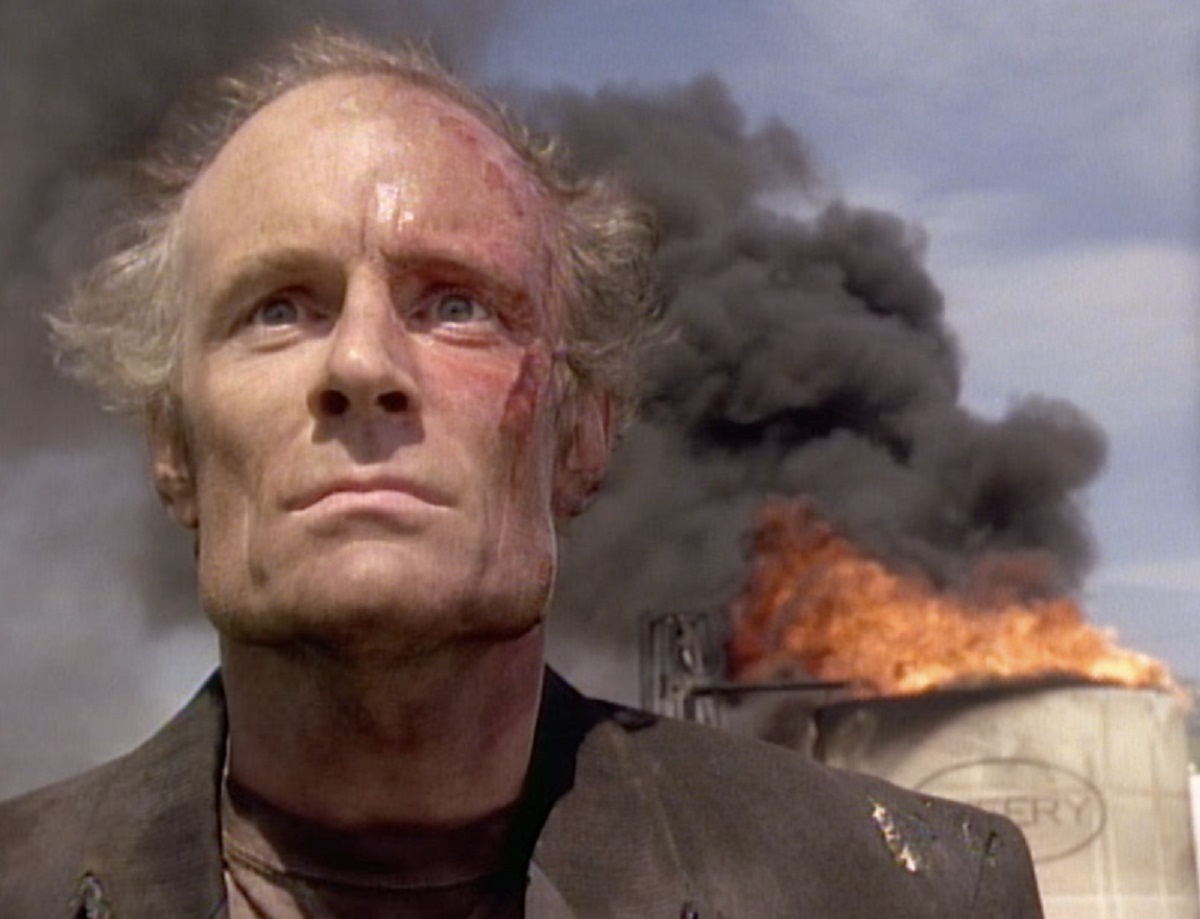
Even more absurd is Nadine Cross who is written as an untouchable virgin bride with a fate to marry darkness that is swallowing her up, even as she tries to fight against it. Cast with Laura San Giacomo, who made a sultry splash in Steven Soderbergh’s debut film Sex, Lies and Videotape (1989), Nadine seems all brittle, edgy nervousness from the outset, not the distant and unavailable ice queen that King gave us. Not to mention, San Giacomo is a diminutive 5’2” – and while one shouldn’t hold an actor/actresses’ height against them, she just seems too absurdly short to be the Devil’s bride. Certainty, she does well when it comes to the later scenes right near the end where she emerges from the shell-shock of her wedding night to taunt Flagg that his empire is falling apart.
For me though, the moment I realised the mini-series was a steaming pile of crap and broke into laughter is the utterly absurd image at the start of the fourth episode of Laura San Giacomo heading off to her wedding night with The Devil’s envoy, driving through the Utah desert on a pink motor scooter with matching pink scarf flying in the breeze. It is an image that has never failed to crack me up every time I subsequently rewatched the series, so utterly banal it seems in what is supposed to be in a serious work about the end of the world. Or for that matter the scenes where Corin Nemec is making his bomb to the accompaniment of Disco Inferno (1976), which has the unintended effect of producing laughter, as well as Nemec’s later death scene falling over a ravine accompanied by an absurdly long Wilhelm Scream.
The first episode in particular has a number of uncredited cameos from well-known actors who have all appeared in other King productions – Ed Harris, who was Sheriff Pangborn in Needful Things (1993) appears as the general running the military base, while Kathy Bates, the memorable Annie Wilkes in Misery (1990), is a radio host. Stephen King has a small role as one of the survivors arriving in Boulder, and he and Mick Garris are seen seated together at the town hall meeting. Sam Raimi, director of The Evil Dead (1981), also has a small cameo as one of the people who stop the Judge as he travels to Vegas.
Other Stephen King genre adaptations include:- Carrie (1976), Salem’s Lot (1979), The Shining (1980), Christine (1983), Cujo (1983), The Dead Zone (1983), Children of the Corn (1984), Firestarter (1984), Cat’s Eye (1985), Silver Bullet (1985), The Running Man (1987), Pet Sematary (1989), Graveyard Shift (1990), It (tv mini-series, 1990), Misery (1990), a segment of Tales from the Darkside: The Movie (1990), Sometimes They Come Back (1991), The Lawnmower Man (1992), The Dark Half (1993), Needful Things (1993), The Tommyknockers (tv mini-series, 1993), The Langoliers (tv mini-series, 1995), The Mangler (1995), Thinner (1996), The Night Flier (1997), Quicksilver Highway (1997), The Shining (tv mini-series, 1997), Trucks (1997), Apt Pupil (1998), The Green Mile (1999), The Dead Zone (tv series, 2001-2), Hearts in Atlantis (2001), Carrie (tv mini-series, 2002), Dreamcatcher (2003), Riding the Bullet (2004), ‘Salem’s Lot (tv mini-series, 2004), Secret Window (2004), Desperation (tv mini-series, 2006), Nightmares & Dreamscapes: From the Stories of Stephen King (tv mini-series, 2006), 1408 (2007), The Mist (2007), Children of the Corn (2009), Everything’s Eventual (2009), the tv series Haven (2010-5), Carrie (2013), Under the Dome (tv series, 2013-5), Big Driver (2014), A Good Marriage (2014), Mercy (2014), Cell (2016), 11.22.63 (tv mini-series, 2016), The Dark Tower (2017), Gerald’s Game (2017), It (2017), The Mist (tv series, 2017), Mr. Mercedes (tv series, 2017-9), 1922 (2017), Castle Rock (tv series, 2018-9), Doctor Sleep (2019), In the Tall Grass (2019), Pet Sematary (2019), The Outsider (tv series, 2020), The Stand (tv mini-series, 2020-1), Chapelwaite (tv series, 2021), Lisey’s Story (tv mini-series, 2021), Firestarter (2022), Mr Harrigan’s Phone (2022), The Boogeyman (2023), The Life of Chuck (2024), Salem’s Lot (2024), the tv series The Institute (2025- ), The Long Walk (2025), The Monkey (2025) and The Running Man (2025). Stephen King had also written a number of original screen works with Creepshow (1982), Golden Years (tv mini-series, 1991), Sleepwalkers (1992), Storm of the Century (tv mini-series, 1999), Rose Red (tv mini-series, 2002) and the tv series Kingdom Hospital (2004), as well as adapted his own works with the screenplays for Cat’s Eye, Silver Bullet, Pet Semetary, The Stand, The Shining, Desperation, Children of the Corn 2009, A Good Marriage, Cell and Lisey’s Story. King also directed one film with Maximum Overdrive (1986). Stephen King on Screen (2022) is a documentary about King film adaptations.
Trailer here


